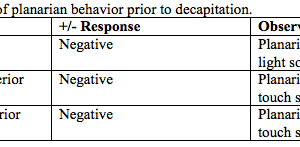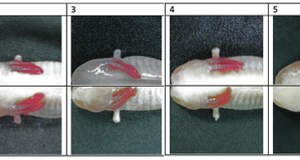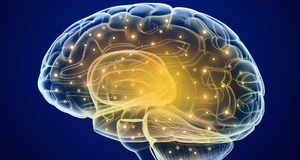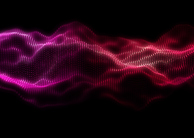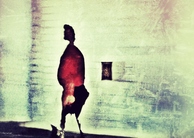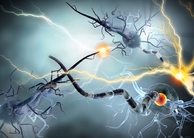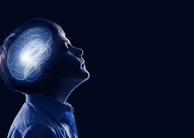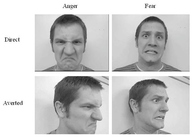From Discussions VOL. 2 NO. 1Alternative Methods to Autologous Nerve Grafting for the Regeneration of the Peripheral Nervous System
IN THIS ARTICLE
KEYWORDS
IntroductionThe peripheral nervous system is made up of the nerves and neurons that are outside of the central nervous system. These nerves and neurons are used to transport information between the brain and the rest of the body, and when damaged, can severely impact an individual's motor and sensory function [1]. In the United States there are more than 50,000 surgical operations performed each year to repair peripheral nerve damage [2]. When cut, peripheral nerves attempt to grow towards and reconnect to the tissue or muscle they had previously controlled [2]. Neurons are able to effectively regenerate over short distances without any help. However, when the gap they must regenerate across is too wide, a graft is needed to guide the neuron and to prevent the formation of a neuroma [3]. Regeneration is most successful when the severed axons are able to successfully grow through the remnants of the site where the original connection was. In order to help aid in the regrowth of longer gaps a technique called "nerve grafting" is used [4]. Without such grafts, these injuries may never fully heal, and can be permanently debilitating. With the use of these grafts, a much more successful recovery is possible. Autologous grafts, with their high rate of success, are currently the method most in use today for such situations. However, there are drawbacks to using this method. Autologous grafts require that a nerve be taken from somewhere else on the patient's body. Not only must the patient have an additional operation in order to obtain this nerve, but the patient also must consider a possible loss of function at the location from which this nerve was taken [4]. Because of the drawbacks associated with this method, alternative types of grafts including collagen and non-neural grafts are currently being examined to replace autologous nerve grafting as the primary method of assisted peripheral nerve regeneration. The purpose of this paper is to review the positive and negative aspects of autologous nerve grafting, summarize the capabilities of other forms of grafting to replace the current method, and to present concluding thoughts on the future of peripheral nerve grafting. AUTOLOGOUS NERVE GRAFTINGThe primary method of peripheral nerve grafting in use today is the autologous nerve graft. In this treatment, a comparable nerve is first removed from another part of the patient's body. The nerve is then used to bridge the gap and connect the two ends of the severed nerve, and to then guide the regrowth of the actual nerves [5]. There are several reasons why this method has become so universally accepted. One reason is that by taking the donor nerve from within the patient's body, there is no chance for immunorejection. This is a major benefit of autologous grafting as it nullifies a significant portion of the risks associated with implanting a foreign material into a patient's body. The autologous graft also has a fairly high success rate, and usually restores the majority of functionality to the damaged location. This graft also provides a support structure that promotes regeneration [6]. However, the use of the autologous graft as a nerve grafting method is not perfect, and there are several disadvantages. The most prominent disadvantage to this method is the possibility of a loss of function at the site where the donor nerve was taken. By removing a nerve from a fully functioning part of the body, there is the risk that full functionality at this location will be lost. In addition, the patient may have complications from the additional surgery, and is subjected to an increased risk of infection at the donor site. This method also can lead to incomplete regeneration of the damaged nerve, even with the use of the autologous graft [2]. Another detriment to autologous grafts is that there are a limited number of locations that can be used as a donor site, as the selected nerve must have a similar structure to the nerve that was removed. In addition, another negative outcome is the possibility of the death of the donor tissue because of an unsuccessful attempt to attach it to the damaged location [5]. With this complication, the patient would be left with two damaged locations and no restoration of function in the original location. NON-AUTOLOGOUS NERVE GRAFTINGAttempts have been made to discover a method to assist in peripheral nerve regeneration without involving tissue removed from another location on the patient's body. To eliminate this requirement, graft methods have been created that involve the use of extracellular matrix (ECM) of non-autologous tissue instead of autologous tissue [4]. However, there are disadvantages with the use of nonautologous tissue. The cells native to the non-autologous tissue must be completely eliminated in order to remove the risk of immunorejection, and this is difficult to do without the destruction of the ECM [6]. If the tissue is to be used as a nerve graft, it is vital that the ECM remain intact.
The extracellular matrix, or ECM, plays an important role in nerve regeneration. The ECM is the material that surrounds cells, and molecules within the matrix can help guide, promote, or inhibit the growth of neurons. It may be necessary to emulate the ECM in order to accurately guide the axonal regeneration. Attempts have been made to create a non-neural graft that satisfies all of the criteria above. However, it has been difficult to create a graft that maintains the structure of the ECM while eliminating cellular debris because of limitations when using thermal, radiation, and chemical treatments, and because of this, bioartificial grafts have had lower success rates than autologous grafts [1]. There are a variety of techniques used to create a graft using non-autologous tissue. These techniques include thermal, radiation, and chemical treatments, but thermal is the most common method in use today [6]. When tissue is subjected to thermal treatment, it goes through a series of freeze-thaw cycles. These cycles kill the cells in order to make the graft acellular, but they damage the native ECM and do not extract the cellular debris from the tissue [2]. After this graft is implanted into the patient, the cellular debris left behind must then be cleared out by the patient's immune system before regeneration is able to begin [6]. Radiation treatment does not destroy the extracellular matrix to the same extent, but it also fails at extracting the cellular debris from the material. Because of the presence of drawbacks in both of these creation techniques, it is difficult to create a graft that successfully removes cellular debris while leaving the ECM intact. Chemical treatment is able to effectively wash away the cellular debris, but it also causes significant damage to the ECM. However, recent advances have created chemical treatments which are able to effectively wash out cellular debris while still leaving the ECM largely intact [6]. Because of these advances, chemical treatment may be able to one day replace thermal treatment as the primary method of decellularization and be much more successful at leaving the extracellular matrix intact. NON-NEURAL NERVE GRAFTINGThe first type of non-autologous graft that will be discussed is the non-neural, or bioartificial, nerve graft. The use of this graft attempts to avoid the disadvantages presented by the autologous graft, while still promoting peripheral nerve regeneration. In order to achieve this result, the graft must be made out of a material that has similar characteristics to that of the nerve it is guiding. In addition, the graft must also be biocompatible and biodegradable in order for the graft to be considered a fully acceptable placement [3]. Bioartificial grafts use nonautologous tissues and make use of the presence of both Schwann cells, which guide the neuron regrowth, and extracellular matrix. These grafts must both bridge the gap caused by the patient's injury and help promote the regrowth of neurons across this gap. The extracellular matrix of the nonautologous tissue may be the main component of the graft used to improve the regrowth of neurons [7]. One method of increasing the effectiveness of an artificial material as a functioning nerve graft is to seed it with Schwann cells. Schwann cells are myelin producing cells required for axonal regeneration by guiding the axons and producing adhesion molecules [6]. Without the use of Schwann cells it is much more difficult for neurons to regenerate across long gaps. In the most effective experiments that involve collagen as the nerve graft, Schwann cells were seeded within the collagen in order to promote growth [5].Continued on Next Page » Suggested Reading from Inquiries Journal
Inquiries Journal provides undergraduate and graduate students around the world a platform for the wide dissemination of academic work over a range of core disciplines. Representing the work of students from hundreds of institutions around the globe, Inquiries Journal's large database of academic articles is completely free. Learn more | Blog | Submit Latest in Neuroscience |








